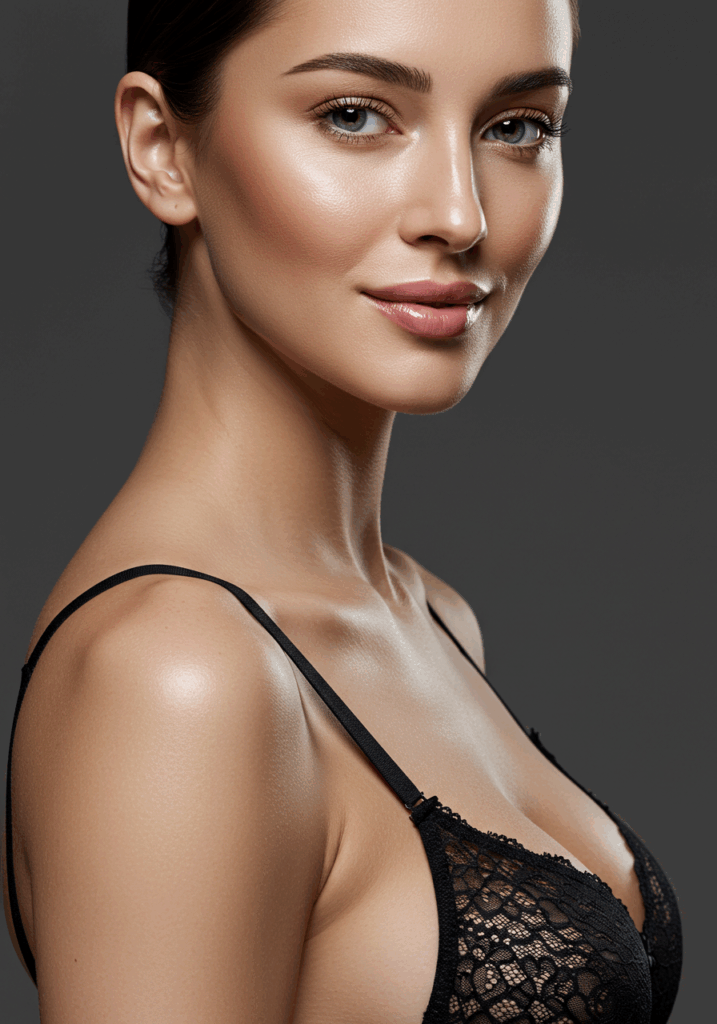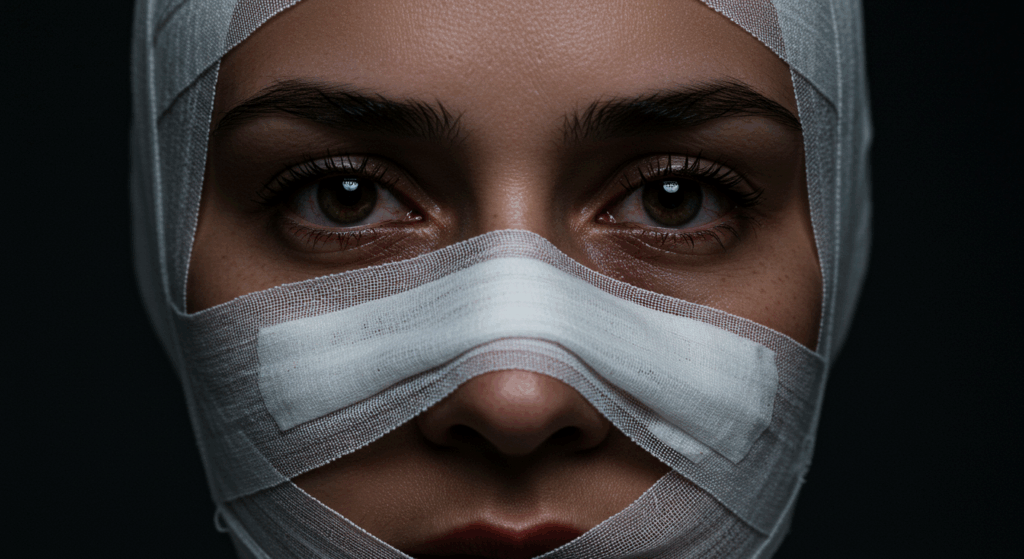L'augmentation des joues est une pierre angulaire de Féminisation faciale Chirurgie (FFS), transformant les contours masculins du visage en traits plus doux et plus féminins. femmes transgenres Pour les personnes séropositives et non binaires, cette procédure ne se limite pas à l'esthétique : elle vise à harmoniser l'apparence physique avec l'identité de genre. Cependant, choisir la bonne technique peut s'avérer complexe. Devriez-vous opter pour implants, greffe de graisse, ou chargesQuels sont les risques, les délais de récupération et les résultats à long terme ?
Dans ce guide complet de 3 000 motsNous abordons en profondeur tous les aspects de l'augmentation des joues en FFS, des méthodes chirurgicales aux conseils de récupération, pour vous permettre de prendre une décision éclairée. Que vous fassiez des recherches pour vous-même ou que vous souteniez un proche, ce guide est fait pour vous. ressource définitive.

Table des matières
Comprendre l'augmentation des joues dans la chirurgie de féminisation du visage
Pourquoi l'augmentation des joues est importante dans le FFS
L'augmentation des joues joue un rôle essentiel dans le FFS car :
- Équilibre facial : Il adoucit les mâchoires anguleuses et masculines et crée un visage en forme de cœur, signe distinctif de la féminité.
- Apparence juvénile : Des joues plus pleines sont associées à la jeunesse et à la vitalité, neutralisant les effets du vieillissement.
- Expression émotionnelle : Des pommettes rehaussées peuvent rendre le visage plus expressif et plus accessible.
La science derrière les contours des joues féminines
Les recherches montrent que les visages féminins présentent généralement :
- Pommettes plus hautes et plus prononcées.
- Une transition plus douce des joues vers le bas du visage.
- Des mâchoires et des structures du menton moins proéminentes.
L'augmentation des joues en FFS vise à reproduire ces traits par des méthodes chirurgicales ou non chirurgicales. Pour en savoir plus sur les principes de la féminisation du visage, consultez notre guide. choisir le meilleur chirurgien FFS.

Techniques d'augmentation des joues : une analyse comparative
Il existe trois principaux techniques Pour l'augmentation des joues en FFS. Chaque option présente ses avantages, ses risques et ses candidats idéaux. Voici une comparaison détaillée :
| Technique | Description | Avantages | Les inconvénients | Le temps de récupération | Longévité |
|---|---|---|---|---|---|
| Implants de joues | Des implants en silicone solide ou en polyéthylène poreux sont placés chirurgicalement sur les pommettes. | Résultats permanents. Formes et tailles personnalisables. Aspect et sensation naturels. | Intervention chirurgicale comportant des risques inhérents. Temps de récupération plus long. Risque de déplacement de l'implant. | 2 à 4 semaines | Permanent |
| Greffe de graisse | La graisse est prélevée sur une autre partie du corps (par exemple, les cuisses ou l’abdomen) et injectée dans les joues. | Aspect et toucher naturels. Double avantage liposuccion. Risque minimal de rejet. | Les résultats peuvent varier en fonction de l'absorption des graisses. Plusieurs séances peuvent être nécessaires. Moins prévisible que les implants. | 1 à 2 semaines | Longue durée (5 à 10 ans) |
| Agents de comblement dermique | De l’acide hyaluronique ou d’autres produits de comblement sont injectés dans les joues pour une augmentation temporaire. | Non chirurgical, convalescence minimale. Résultats immédiats. Réversible en cas d'insatisfaction. | Résultats temporaires (6 à 18 mois). Nécessite des séances d'entretien. Moins spectaculaire que la chirurgie. | 1 à 3 jours | 6-18 mois |
Quelle technique vous convient le mieux ?
Le choix de la bonne technique dépend de vos objectifs, de votre budget et de votre tolérance aux temps d'arrêt. Voici un guide rapide :
- Pour des résultats permanents et spectaculaires : Implants de joues.
- Pour un look naturel avec des bienfaits remodelants pour le corps : Greffe de graisse.
- Pour une option non chirurgicale et à faible engagement : Produits de comblement dermique.
Pour une analyse plus approfondie des procédures de combinaison, lisez notre article sur combinant rhinoplastie et augmentation des joues en FFS.
La procédure d'augmentation des joues : étape par étape
Consultation pré-chirurgicale
Votre voyage commence par une consultation avec un FFS certifié par le conseil d'administration chirurgien. Au cours de cette visite :
- Votre chirurgien évaluera votre structure faciale et discutera de vos objectifs.
- L’imagerie 3D ou les simulations peuvent être utilisées pour prévisualiser les résultats potentiels.
- Vous discuterez des options techniques, des risques et des attentes en matière de récupération.
Jour de l'opération
Le jour de l'intervention :
- Anesthésie: L'anesthésie générale est généralement utilisée pour les implants et les greffes de graisse. Une anesthésie locale peut suffire pour les produits de comblement.
- Placement de l'incision :
- Implantations : Les incisions sont généralement pratiquées à l’intérieur de la bouche (intra-orale) ou sous les paupières inférieures.
- Greffe de graisse : La graisse est prélevée par liposuccion, puis injectée dans les joues.
- Remplisseurs : Injecté directement dans les joues à l'aide d'une aiguille fine.
- Durée de la procédure :
- Implants : 1 à 2 heures.
- Greffe de graisse : 2 à 3 heures (liposuccion comprise).
- Remplissages : 30 à 60 minutes.
Soins post-chirurgicaux
La récupération varie selon la technique mais comprend généralement :
- Gonflement et ecchymose : Attendez-vous à 1 à 2 semaines de gonflement notable, en particulier avec les implants et les greffes de graisse.
- Gestion de la douleur: Des analgésiques sur ordonnance ou en vente libre peuvent être recommandés.
- Visites de suivi : Votre chirurgien surveillera la guérison et les résultats.
Pour plus de conseils de récupération, consultez notre guide sur Récupération FFS.
Risques et complications de l'augmentation des joues dans le cadre d'une FFS
Bien que l’augmentation des joues soit généralement sans danger, il est important d’être conscient des risques potentiels :
| Risque | Implants de joues | Greffe de graisse | Agents de comblement dermique |
|---|---|---|---|
| Infection | Rare, mais possible. Des antibiotiques sont généralement prescrits. | Faible risque grâce à la graisse autologue. | Risque très faible. |
| Asymétrie | Possible si les implants se déplacent. | Possible si la graisse est absorbée de manière inégale. | Minimal, car les charges peuvent être ajustées. |
| Cicatrices | Minimal, car les incisions sont cachées. | Minimal, car les incisions sont petites. | Aucun. |
| Surcorrection/Sous-correction | Possible, mais ajustable avec une chirurgie de révision. | Possible, mais peut être corrigé avec des séances supplémentaires. | Facilement réversible avec la hyaluronidase. |
| Lésion nerveuse | Rare, mais possible (temporaire ou permanent). | Très rare. | Très rare. |
Atténuer les risques
Pour minimiser les complications :
- Choisis un chirurgien FFS certifié avec une vaste expérience en chirurgie faciale transgenre.
- Suivez attentivement toutes les instructions pré et postopératoires.
- Assistez à tous les rendez-vous de suivi pour surveiller la guérison.
Apprenez-en davantage sur la gestion des risques dans notre article sur combinant les procédures FFS.
Conclusion : Votre chemin vers l'harmonie faciale féminine
Principaux enseignements
- L'augmentation des joues est un outil puissant en FFS, capable de transformer les traits masculins du visage en contours plus doux et plus féminins.
- Trois techniques principales—les implants, les greffes de graisse et les produits de comblement—offrent des avantages et des compromis uniques.
- La récupération et les risques varient selon la technique, mais choisir un chirurgien expérimenté minimise les complications.
- Consultation et imagerie 3D sont essentiels pour atteindre les résultats souhaités.
Prochaines étapes
Prêt à passer à l'étape suivante ? Voici comment procéder :
- Chirurgiens de recherche : Recherchez des spécialistes FFS certifiés et expérimentés en chirurgie faciale transgenre. Notre guide trouver le meilleur chirurgien FFS peut aider.
- Planifier des consultations : Discutez de vos objectifs et explorez les options techniques avec des chirurgiens potentiels.
- Préparez-vous à la reprise : Prévoyez des temps d’arrêt et suivez les instructions postopératoires de votre chirurgien.
Questions fréquemment posées sur l'augmentation des joues en FFS
1. À quel point l’augmentation des joues est-elle douloureuse dans le cas d’une FFS ?
Les niveaux de douleur varient selon la technique :
- Implantations : Inconfort modéré pendant les premiers jours, géré avec des analgésiques.
- Greffe de graisse : Inconfort léger à modéré, principalement au niveau des sites de liposuccion.
- Remplisseurs : Inconfort minimal, souvent décrit comme un pincement.
2. L’augmentation des joues peut-elle être combinée avec d’autres procédures FFS ?
Oui ! L'augmentation des joues est souvent associée à :
- Rhinoplastie (remodelage du nez).
- Contour de la mâchoire.
- Féminisation du front.
La combinaison des interventions peut réduire le temps et les coûts globaux de récupération. En savoir plus combinant rhinoplastie et augmentation des joues.
3. Combien de temps faut-il pour voir les résultats finaux ?
Les résultats finaux dépendent de la technique :
- Implantations : 3 à 6 mois, à mesure que le gonflement diminue.
- Greffe de graisse : 3 à 6 mois, le temps que la graisse se stabilise et s'intègre.
- Remplisseurs : Immédiat, mais peut nécessiter des retouches.
4. Existe-t-il des alternatives non chirurgicales à l’augmentation des joues ?
Oui ! Les produits de comblement dermique sont une option non chirurgicale populaire. Ils offrent une augmentation temporaire avec une convalescence minimale. Cependant, les résultats durent généralement de 6 à 18 mois et nécessitent un entretien.
5. Comment choisir le meilleur chirurgien pour une augmentation des joues en FFS ?
Choisir le bon chirurgien est crucial. Recherchez :
- Certification du conseil en chirurgie plastique ou faciale.
- Vaste expérience en chirurgie faciale FFS et transgenre.
- Photos avant et après des patients précédents.
- Témoignages et avis positifs de patients.
Pour plus de conseils, lisez notre guide sur trouver le meilleur chirurgien FFS.
6. Quel est le coût d'une augmentation des joues en FFS ?
Les coûts varient selon la technique et la situation géographique :
- Implantations : $5 000–$10 000.
- Greffe de graisse : $3 000–$8 000 (y compris la liposuccion).
- Remplisseurs : $600–$2 000 par séance.
7. L’augmentation des joues peut-elle être inversée ?
La réversibilité dépend de la technique :
- Implantations : Réversible avec ablation chirurgicale.
- Greffe de graisse : Partiellement réversible, mais il peut rester un peu de graisse.
- Remplisseurs : Entièrement réversible avec des injections de hyaluronidase.
8. Quels sont les signes d’une augmentation des joues ratée ?
Les signes d’une augmentation des joues mal réalisée comprennent :
- Asymétrie ou contours irréguliers.
- Pommettes trop proéminentes ou d’apparence peu naturelle.
- Cicatrices ou bosses visibles.
- Douleur chronique ou lésion nerveuse.
Si vous soupçonnez une procédure bâclée, consultez immédiatement un spécialiste de révision.
Visite Profil Instagram du Dr MFO pour voir de vraies transformations de patients ! Obtenez un aperçu des résultats incroyables obtenus grâce au soin du visage chirurgie de féminisation et d'autres procédures. Le profil présente des photos avant et après qui mettent en valeur Dr MFOL'expertise et la vision artistique de pour créer de beaux résultats d'apparence naturelle.
Prêt à franchir la prochaine étape de votre voyage ? Planifier un consultation gratuite avec Dr MFO ( Meilleur chirurgien spécialisé dans la féminisation du visage pour vous) aujourd'hui. Au cours de la consultation, vous pourrez discuter de vos objectifs, poser toutes les questions que vous pourriez avoir et en apprendre davantage sur la façon dont Dr MFO peut vous aider à obtenir le look souhaité. N'hésitez pas à profiter de cette opportunité gratuite pour explorer vos options et voir si Dr MFO est la bonne solution pour vous.









